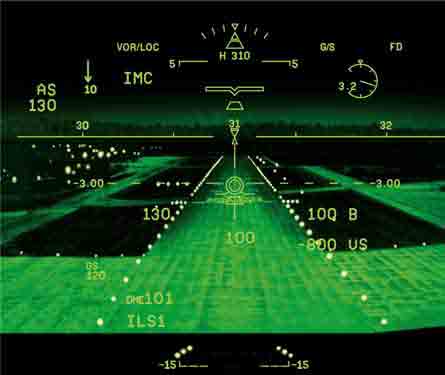Rockwell Collins ditches original sensor on EVS project for Max-Viz multi-wavelength unit, which can detect LEDs
Rockwell Collins is to proceed with the long-anticipated development of an enhanced vision system (EVS) for the Boeing Business Jet (BBJ), and has selected Max-Viz to supply the infrared sensor.
When plans for a BBJ EVS were revealed in 2004, Collins said a CMC Electronics sensor had been selected. "Timeframe and capability - what the customer wanted and when it was available to market" led to the change in sensor supplier, says Tom Geiger, manager, corporate head-up guidance system. A major factor, he says, was the availability from Max-Viz of a multi-wavelength sensor that can detect the increasingly prevalent LED runway lights, which do not transmit infrared energy.
|
|---|
Data is incorporated from three cameras for multi-wavelength coverage |
Collins will be responsible for supplemental type certification of the EVS on the BBJ, and plans to complete all flight testing this year, with certification scheduled for early 2008. The head-up display (HUD)-based EVS will be approved to provide approach guidance down to a reduced minimum of 100ft (30m) altitude under the US Federal Aviation Administration's enhanced flight vision system rule.
All BBJs are already equipped with a Collins-supplied HUD on the pilot's side, and the EVS will be offered to customers through Boeing and Collins service bulletins. Geiger says availability will only be in the corporate market and will not be extended to Part 121 commercial operators of the 737, on which the BBJ is based.
The sensor will be mounted above the radome, on the pilot's side. About half of all BBJs already have the EVS-capable HGS-4000 HUD, Geiger says, while the remainder are being upgraded. Head-down display of the EVS image on the centre pedestal, for the non-flying pilot, will be available as an option, he says.
The BBJ EVS will be the first using a Max-Viz sensor to be certificated for landing credit. Previous approvals, first by Gulfstream and then by Bombardier, have used Kollsman and CMC sensors respectively The sensor will fuse imagery from three cameras, says Max-Viz chief executive Jim Tuttle: charge-coupled device for LED lighting, short-wave IR for incandescent lighting and long-wave IR for the thermal background.
Collins, meanwhile, is moving towards approval of a HUD-based system on Dassault's Falcon business-jet family, the first EVS certification effort to be conducted with European Aviation Safety Agency. Geiger says a "first phase" approval that does not provide landing credit is expected this quarter, with "for credit" certification to follow.
Source: Flight International
























